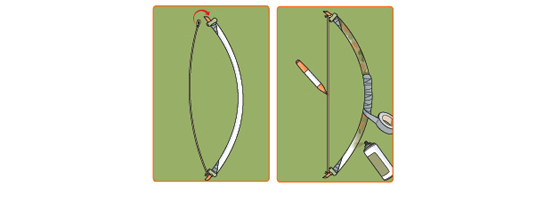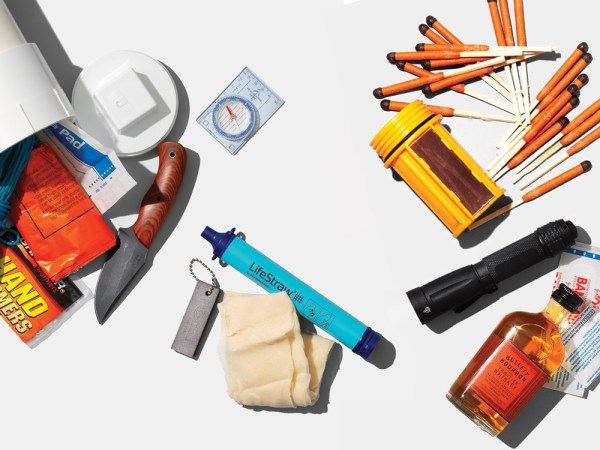Editor’s Note: This tip comes from our new “Prepare for Anything Survival Manual.”
Whether you need to hunt for food or fend off post-apocalyptic barbarian hordes, a bow is a good, versatile weapon and tool. Building a simple wooden longbow takes a fair amount of know-how, but with these directions and a length of PVC pipe, you can improvise a bow with a draw of up to 60 pounds.
You’ll Need:
– 3/4-inch- (2-cm-) wide, 5-foot- (1.5-m-) long PVC pipe (schedule 40 white pipe is stiffer but prone to cracking from UV exposure or cold; schedule 80 gray pipe is softer but may weaken over time if the bow stays strung constantly).{C}
– Two 5-foot (1.5-m) lengths of 1/4-inch (0.6-cm) fiberglass rod (from farm/garden/hardware supply stores)
– 5/8-inch (1.6-cm) rubber heater hose (from auto parts store)
-Athletic tape
-56-inch (1.4-m) bow string (from sporting goods stores; you can improvise one from high tensile cord, but better to buy one)
– Self-adhering medical wrap
[ Click here to find more survival tips and buy “OL’s Prepare for Anything Survival Manual” ]
STEP 1: Cut the ends of the PVC pipe at about a 30-degree angle (tilting toward each other) and sand smooth.

STEP 2: Mark the two fiberglass rods at about 11/8 inch (3 cm), and tape them together with athletic tape, leaving just the measured length of each rod sticking out of the tape. Feed the rods into the PVC pipe; the marked length should be showing at each end.

STEP 3: Cut two 1-inch (2.5-cm) pieces from the 5/8-inch (1.5-cm) heater hose, and punch a hole through both sides midway. Put a hose piece on each end of the fiberglass rods to act as a protector for your bow string.

STEP 4: String your bow by hooking one end of your bow string over the fiberglass rod sticking out of one end of the pipe, bending the bow slowly, and slipping the other end of the bow string onto the other fiberglass rod tip. Be sure the rubber heater hose protects the string from fraying against the pipe. ****Then, mark the center of the bow and wrap the handle in self-adhering medical wrap to improve your grip. Mark the middle of the string to locate where the arrow will be nocked. Cover the bow in tape or paint to protect from wear.
















